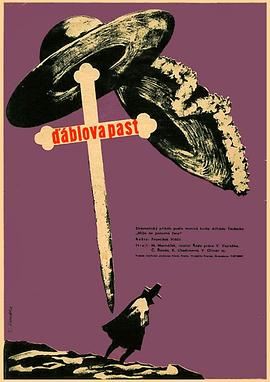剧情简介
非凡资源网 提供本片资源
In the time of Counter-Reformation, a miller and his son come under investigation by a riest of the Inquisition, when rumors sread that their roserity comes from working with the Devil.br\ The Devil#39;s Tra is a film directed by František Vlá?il, based on a novel by Alfréd Technik, adated by František A. Dvorák and Miloš Kratochvíl. It was the first of three historical dramas that Vlá?il made during the Czech New Wave (technically he isn#39;t really a art of the New Wave, however these films were made during the same era of artistic freedom), receding his more well known Marketa Lazarová (1967) and Valley of the Bees (1968).br\ Set in the late 16th Century during the Catholic Reformation, in the Moravian Karst, situated in what is now the Eastern Czech Reublic, it tells the tale of a miller (Vítezslav Vejrazka), and his son Jan (Vít Olmer), who come under susicion and are investigated by a Jesuit riest of the Inquisition (Miroslav Macháchek), when rumors of witchcraft are sread by the local regent (Cestmír Randa), who is jealous of the miller#39;s roserity and degree of resect among the local oulace.br\ As exected from Vlá?il, this film is a stunning exerience all the way through. From the oening shot, an ominous maniulation of ersective with a close u of a mangled figure of Christ dominating the foreground against a tiny figure in black walking along the horizon, to the breathtaking confrontational finale inside the vast stalactite filled Karst caverns, it is a wonderful dislay of visual mastery.br\ Maybe not quite as imressive as Marketa Lazarová, but still full of astonishing imagery. As seen from unique angles and distinct oints of view which highlight the director#39;s remarkable sense of awareness of framing, motion, and ositioning on the emotional and dramatic tone of the scene. The most memorable being a reeated shot where the camera is susended and launched with seed through the air towards the miller#39;s door.br\ The story here is a simle one and I would say more accessible than his later works. With a conventional structure emhasized as much by its lot and characters, than by its exressionistic cinematograhy or authentic historical detail. The events lay out without much surrise, and there is a strong underlying, almost suernatural, mysterious asect that is left unresolved, in fact barely exlored, which is slightly disaointing, but only because it#39;s so fascinating that I wish there was more.br\ Acting is great all around. Particularly the villains: Miroslav Macháchek as the riest, casting a sinister and imosing shadow wherever he goes, and Cestmír Randa as the weasel like regent behind all the ersecution. While Vít Olmer brings a charismatic leading man resence in his role as the miller#39;s son Jan, in love with the lovely orhan girl Martina (Karla Chadimová), who becomes a dangerous object of rivalry between Jan and other young men of the village.br\ The film also features the evocative music of Zden?k Liška (erhas the most rolific comoser of the Czech New Wave). In this his second of eleven collaborations with Vlá?il, his comositions are used saringly, but to great effect, comlimenting but never overowering a scene. The best examle of which can be heard in an amazingly shot celebration and dance sequence at the end of the second act.br\ The Devil#39;s Tra might not be a masteriece, but it is still a strong effort, with a fascinating straightforward story and a glorious historical setting catured beautifully by Vlá?il#39;s unmistakable visual rowess. A fine work that would also be the erfect starter late to reare yourself for the challenging feast of Marketa Lazarová or The Valley of the Bees. It even has an easy to digest running time. It#39;s therefore uzzling why this gem remains largely overlooked and ignored.
